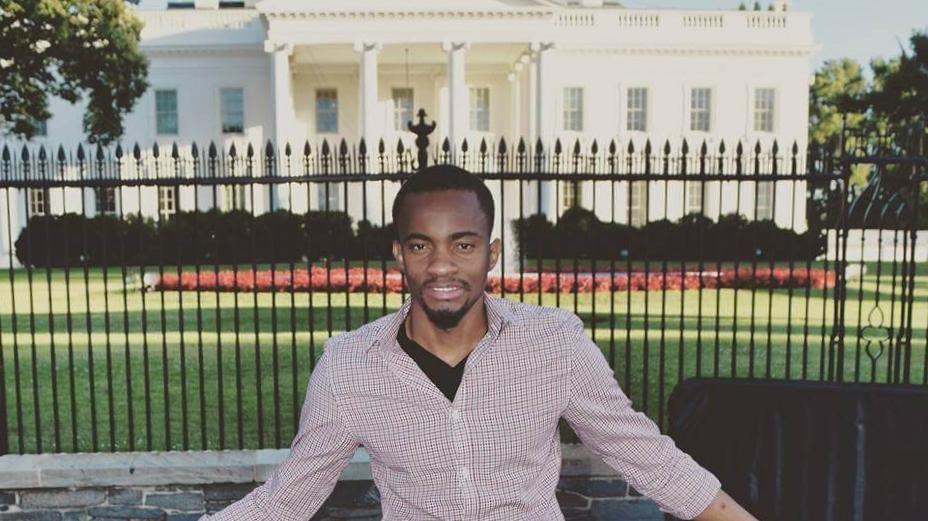My voice is my passport — verify me
Alex Bukasa, an asylum-seeker who had been a journalist in the Democratic Republic of the Congo, poses in front of the White House. His asylum claim has not been heard after more than four years in the US.
Remember the 1990’s flick Sneakers with Robert Redford?
Redford’s character leads a group of hackers on a mission to steal a decoder from the NSA. And there’s a part in the film when Redford needs to bypass security to sneak into a building.
Only problem? The security is a voice activated.
oembed://%20https%3A//www.youtube.com/watch%3Fv%3D-zVgWpVXb64
At least, in 1992 that might’ve been a problem. Today, if José Sotelo has anything to do with it, Redford’s crew need not worry about imitating a voice. Sotelo co-founded a start-up called Lyrebird that can synthesize your voice with as little as one minute of recording.
This week on the podcast: Computers speak.
We talk about the original chat bot “ELIZA,” who was created as a therapy bot and, yes, was named after Eliza Doolittle. We look into the history of speech synthesis from the brazen heads of the medieval times to the animated tones of the Voder, the electronic attempt to replicate speech. And best of all — Patrick Cox has his voice synthesized.
Plus, we fret about the ethical implications of it all. How will this technology further erode our notion of truth? Are we entering a black mirror moment?
oembed://https%3A//www.youtube.com/watch%3Fv%3DaPfci3bmcDE
Podcast Contents:
00:00 Meet Nina’s voice clone
1:18 Pm Weizenbaum remembers her father Joe Weizenbaum, one of the early innovators of Artificial Intelligence
2:22 Joe Weizenbaum created ELIZA, the very first chatbot
3:55 Pm was never fooled by ELIZA but Joe’s secretary was
5:50 José Sotelo is a co-founder of a start-up called Lyrebird that is developing voice synthesis technology
7:50 Donald Trump synthesized
8:13 How does the technology work?
10:47 Synthesizing Patrick’s voice
13:27 Humans have been trying to synthesize speech for a long time and there are centuries-old stories of inanimate objects speaking
14:15 The Voder debuted at the New York World’s Fair in 1939. It’s the first attempt to electronically replicate talking by breaking down speech into 20-different sounds
15:20 In 1968 Bell Laboratories made an IBM computer sing. The IBM’s song was echoed in the film 2001: a space odyssey
oembed://https%3A//www.youtube.com/watch%3Fv%3DUgkyrW2NiwM
16:22 “We care a lot about our voice as part of our identity”
17:20 Pete Ford is the founder of itsme, a personal avatar company and a user of Lyrebird’s voice synthesis technology. He thinks about how this technology could be used to bring back the dead
19:30 “I don’t think there’s anything inherently evil about us being able to record what our voice sounds like before we’ve said anything”
21:00 José Sotelo thinks about the consequences of his technology
21:50 Joe Weizenbaum had second thoughts about the field of AI
23:06 Sotelo’s mission is to educate people about this technology
23:50 Listen to Patrick’s digital voice
